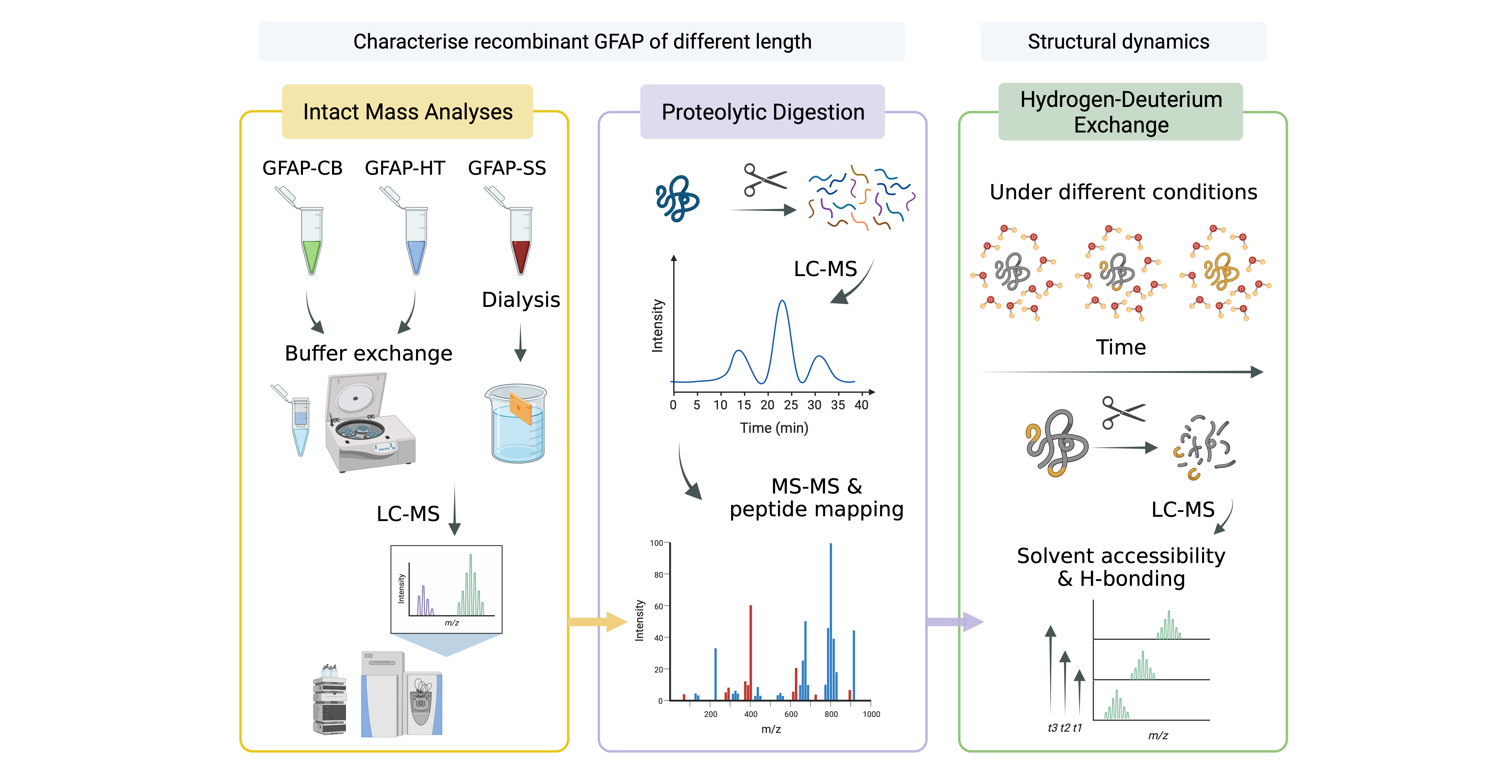Structural flexibility and heterogeneity of recombinant human glial fibrillary acidic protein (GFAP)
Dea Gogishvili, Eva Illes-Toth, Matthew J Harris, Christopher Hopley, Charlotte E Teunissen, Sanne Abeln.
Glial fibrillary acidic protein (GFAP) is a promising biomarker for brain and spinal cord disorders. Recent studies have highlighted the differences in the reliability of GFAP measurements in different biological matrices. The reason for these discrepancies is poorly understood as our knowledge of the protein's 3-dimensional conformation, proteoforms, and aggregation remains limited. Here, we investigate the structural properties of GFAP under different conditions. For this, we characterised recombinant GFAP proteins from various suppliers and applied hydrogen-deuterium exchange mass spectrometry (HDX-MS) to provide a snapshot of the conformational dynamics of GFAP in artificial cerebrospinal fluid (aCSF) compared to the phosphate buffer. Our findings indicate that recombinant GFAP exists in various conformational species. Furthermore, we show that GFAP dimers remained intact under denaturing conditions. HDX-MS experiments show an overall decrease in H-bonding and an increase in solvent accessibility of GFAP in aCSF compared to the phosphate buffer, with clear indications of mixed EX2 and EX1 kinetics. To understand possible structural interface regions and the evolutionary conservation profiles, we combined HDX-MS results with the predicted GFAP-dimer structure by AlphaFold-Multimer. We found that deprotected regions with high structural flexibility in aCSF overlap with predicted conserved dimeric interface regions. Our results suggest that GFAP exists in several conformational forms. Structural property predictions combined with the HDX data show an overall deprotection and signatures of aggregation in aCSF. We anticipate that the outcomes of this research will contribute to a deeper understanding of the structural flexibility of GFAP and ultimately shed light on its behaviour in different biological matrices.
Keywords: GFAP, dementia biomarkers, neurodegenerative diseases
 Figure 1. Outline of the study. In this study we first investigated recombinant GFAP from different sources using intact mass analysis and proteolytic digestion to confirm reported sequences. After selecting the optimal preparation, based on our results, we moved on to investigate the structural changes of GFAP under different conditions.
Figure 1. Outline of the study. In this study we first investigated recombinant GFAP from different sources using intact mass analysis and proteolytic digestion to confirm reported sequences. After selecting the optimal preparation, based on our results, we moved on to investigate the structural changes of GFAP under different conditions.